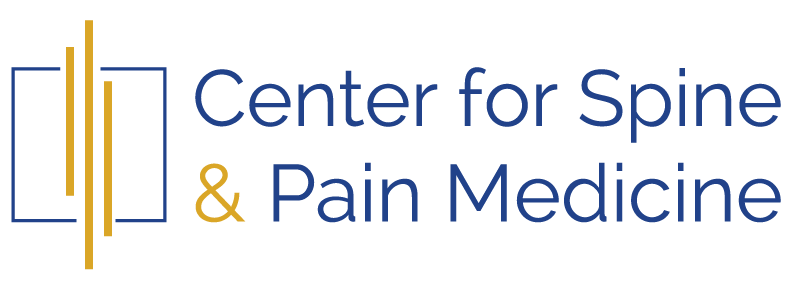
20 Mar Knowing Cervical Radiculopathy: Its Causes, Signs, and Treatment Alternatives
Cervical Radiculopathy: What Is It?
Cervical radiculopathy is a condition that results from nerve root compression in the cervical spine, which is the portion of the spine located in the neck. This compression can be caused by a variety of factors such as degenerative changes in the spine, herniated discs, or spinal stenosis. The pressure on the nerve root can cause symptoms such as pain, numbness, and weakness in the neck, shoulder, arm, or hand, and can also affect reflexes and muscle function. The severity of symptoms can vary depending on the extent of the compression and the location of the affected nerve root. Treatment for cervical radiculopathy may include physical therapy, pain medication, steroid injections, or surgery in severe cases.
Possible Causes of Cervical Radiculopathy
Injury can develop from injuries that impose pressure on the nerve roots, such as arthritis, degenerative changes in the bones, or debris from a ruptured disc.
Cervical radiculopathy is a condition that results from nerve root compression in the cervical spine, leading to symptoms such as pain, weakness, and numbness in the arms and hands. Some of the possible causes of cervical radiculopathy include:
- Age: The risk of developing cervical radiculopathy increases with age, as the cervical spine undergoes wear and tear over time.
- Trauma: Trauma to the neck, such as from a car accident or sports injury, can cause cervical radiculopathy.
- Degenerative Disc Disease: This is a common condition that occurs when the discs between the vertebrae in the spine break down over time, leading to pressure on the nerve roots.
- Herniated Disc: When the gel-like material inside a spinal disc leaks out, it can put pressure on the nerve roots in the cervical spine, causing radiculopathy.
- Spinal Stenosis: This is a condition where the spinal canal narrows, putting pressure on the spinal cord and nerve roots.
- Poor Posture: Poor posture can put strain on the neck and spine, leading to degenerative changes that can cause cervical radiculopathy.
- Repetitive Motion: Repeatedly performing the same motions with the neck and arms, such as working on a computer or playing sports, can lead to cervical radiculopathy.
- Genetics: Some individuals may have a genetic predisposition to developing cervical radiculopathy.
Signs of Cervical Radiculopathy
Pain that radiates into the arm, neck, chest, upper back, and/or shoulders is the primary symptom of cervical radiculopathy. Most of the time, this only affects one side of your body.
Cervical radiculopathy can cause a range of symptoms that can vary depending on the location of the affected nerve root. Some common signs of cervical radiculopathy include:
- Pain in the neck, shoulder, arm, or hand
- Numbness or tingling in the affected areas
- Weakness in the affected muscles
- Loss of reflexes
- Limited range of motion in the neck
- Difficulty with fine motor tasks, such as buttoning clothes or holding utensils
- Headaches
- Muscle spasms in the neck or upper back
Testing and Diagnosis of Cervical Radiculopathy
Cervical radiculopathy refers to the compression or irritation of a nerve root in the neck region, resulting in pain, numbness, weakness, or tingling sensations in the arms, shoulders, or neck.
To diagnose cervical radiculopathy, a healthcare provider may perform a physical exam, including a neurological exam, to assess the patient’s reflexes, muscle strength, sensation, and range of motion.
Imaging tests such as X-rays, MRI, or CT scans may also be used to visualize the cervical spine and detect any structural abnormalities or nerve compression.
Electrodiagnostic tests, such as electromyography (EMG) or nerve conduction studies, can help determine the location and severity of nerve damage.
In some cases, a diagnostic nerve block may be performed, in which a local anesthetic is injected into the affected nerve to temporarily block pain signals and determine if the nerve is the source of the patient’s symptoms.
Overall, a combination of these tests and exams can help diagnose cervical radiculopathy and guide treatment options.
Therapies for Cervical Radiculopathy
Cervical radiculopathy symptoms may, in some cases, improve over time without medical attention. Your doctor will probably start with nonsurgical options if you do need treatment.
Treatments for Cervical Radiculopathy without Surgery
Physical Therapy, medications, or a combination of these are frequently used as nonsurgical treatments for cervical radiculopathy.
- Physical therapy: This can involve exercises, various pain-relieving techniques, and modest cervical traction and mobilization.
- Medications: Corticosteroids, potent anti-inflammatory medicines, or nonsteroidal pain relievers like ibuprofen or naproxen may be used as medications. Steroids can be administered intravenously or subcutaneously (into the space surrounding the dura, which is the membrane that surrounds the spinal cord).
Cervical Radiculopathy Surgical Procedures
In some cases, surgery may be required to release the pressure on the nerve if there is severe compression to the point where motor weakness ensues. Whatever the case may be, make sure you take an informed decision about what would be best for you.
Call us for more information or to make an appointment.We’re reachable at (706) 279-2635 for our centers in Dalton, GA & Chattanooga, TN, and at (678) 450-1222 for our center in Gainesville, GA.


